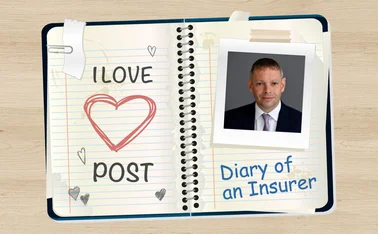
Corporate Underinsurance: Improving understanding of business interruption cover

Last year's riots brought the problem of a lack of business interruption cover to the fore. What are the solutions to underinsurance in this area?
Anecdotally, more examples of business interruption underinsurance within the corporate sector are cropping up. Last summer’s riots spawned some of these cases, as has the fact that companies have been looking to reduce their premium spend as a result of the economic downturn and subsequent squeeze on costs – by way of cutting down on the indemnity period.
Beyond this, some claims are taking longer to settle because of buildings regulation red tape, among other issues. So, how serious a problem is this and what are the solutions?
As the main contact with the insured, brokers clearly have a crucial role to play. Some sources, who did not want to talk on the record, said brokers are not spending enough time with their clients in assessing BI needs and, more worryingly, that junior people are often working on accounts with a lack of knowledge, which needs addressing urgently through training.
Further, some point to the fact that BI wordings are ‘antiquated’ and in desperate need of review. But, there are also plenty of experts who refuse to participate in a blame game and instead want to focus on putting matters right.
Brian Wexler, director of client service and broking for Bluefin, comments: “The wordings may be old, but we have set up our own wordings with our insurers, which have resulted in greater clarity for the customer.
"But, where the issue really lies is that enough time must be set aside for discussing BI needs with the client. You have some larger firms where they think a brief meeting will be sufficient – this is not the case.”
He points out considerable time will be required to study the necessary supply chain issues that may impact on a manufacturer or retailer, and says an indemnity period of 36 months is not unreasonable for some clients.
“A claim is now more likely to be impacted by local authority building regulations, which are more onerous, and in matters like ensuring there is correct disabled access.
"There may be environmental issues and problems in sourcing particular building materials – all the negotiations can take over a year. In the case of hotel claim, for example, a lack of bookings can result in big losses and there is the issue of rebuilding a reputation.”
Common problem
He adds Bluefin provides extensive BI training sessions for its people, which it believes is essential, even if insurers may also provide support.
One common problem quoted is that the accounting terms such as gross profit and gross income used in insurance policies do not have the same meaning as that used by HM Revenue and Customs or accountants.
Chris Townsend, director of the UK corporate risks division for broker Tysers, says: “This is less of an issue on loss of revenue/fee income cases where it is easier to provide good estimates for insurance purposes.
"However, on a gross profit basis, there may be issues as definitions vary, with some clients continuing to use accountancy definitions of gross profit, despite our best advice, or they strip out what they see as variable costs, for example, staff and utilities costs, which leaves them exposed as these costs will often continue to accrue.
“Declarations can help matters with insurers giving 133.3% of the sum insured, thereby giving the insured added flexibility. This also ensures that the subject is discussed at least twice a year.”
He adds: “Indemnity periods are often too short, with clients not realising that it may take many months to start reinstating the premises and so the indemnity period is used up when the site has only just been cleared.
"Choosing appropriate increased costs of working is also an inexact science that could lead to problems. Generally larger businesses are more switched on. However, smaller businesses may not insure BI risks or simply insure for a standard small increased costs limit, which is often inadequate.
"We ensure we discuss this at least annually with our clients to try and avoid any issues but some believe they know best, although we believe this situation is gradually improving as clients become more knowledgeable of the exposures and cover.”
Not fit for purpose
Steve Foulsham, technical services manager at the British Insurance Brokers’ Association, comments: “There are some concerns that BI wordings are not fit for purpose.
"The Chartered Institute of Loss Adjusters has a working group looking at the issue and I want to see this work continue. It needs to be talked about openly and even the government is looking at the issue of lack of insurance linked to the riots.”
He adds that, at the smaller end of the market, SMEs buying direct may well have issues if they fail to understand BI.
“It’s hard enough for some in the industry to fully comprehend, let alone if you are trying to run a business. Small companies can be out of action for a considerable time if there is a claim," he said.
"We obviously think a brokers’ guidance is essential whether it is an SME or a large corporate and we would urge brokers to make sure they train all their people in understanding different insurers’ definitions, such as in gross profit, and get the figures right at the beginning. Overall, I would say, avoid getting into trouble with your PI by making errors in BI.”
While brokers can be exposed to PI claims if they are negligent on BI guidance, it is often the adjuster who delivers the bad news that there is underinsurance.
Ross Macpherson, director of property for adjuster Questgates, comments: “We have certainly seen examples of corporate BI underinsurance. There are a lot of issues to think about when it comes to arranging the cover and brokers must ensure clients set enough time aside for full evaluations.”
He points out that one recent claim involved a call centre client, which relied on incoming calls and internet for its business. “It took out a public utilities extension on its BI, but this was capped at £50 000," he said.
"However, its phone line and internet was disrupted for four days, something it never envisaged. It suffered a huge loss and its insurance did not compensate adequately – as we all know, if you lose customers, it is hard to win them back.”
Macpherson adds that a retailer in Tottenham – a riot hot spot – has been told that to get up and running again will take two and a half years – but it only has BI for 12 months.
“This is a company with a 25-year lease, so it can’t simply walk away. It is also a listed building, so there are going to be issues around finding more unusual building materials,” he said.
He claims it may make sense for brokers to recommend clients use adjusters for pre-loss services such as BI surveys: “There may be a cost involved, but we are seeing more of this work – it is too important to get wrong. We might also be able to provide some broker training – and I would also advise brokers to keep up with the work CILA is doing in this area.”
From an insurer perspective, Douglas Barnett, head of customer risk management at Axa, says: “We all have a responsibility to ensure BI is properly understood. I have concerns that knowledge has gone out of the industry in recent years and we’ve got to get this sorted, by ensuring there is a lot more training and investment.”
He says corporate clients are likely to have global connections and that understanding international implications can be critical. “One claim I’m aware of involved metallic pigment being produced in Japan, which was used by a UK-based car manufacturer. The Japanese tsunami caused huge disruption, which affected supplies, manufacturing and earnings. It was an extremely serious situation,” he said.
Barnett explains there are growing numbers of cases where risk surveyors are being sent abroad to check on supply chain related issues: “It sounds a cliché to talk about delivering the promise, but that is what it is all about and they may need to physically inspect a business abroad which is of vital importance to a UK client – and expert surveyors can also assist brokers.”
Broker Cowens Survival Capability was set up to focus on ensuring businesses could manage a serious loss and associate director Grant Scott comments: “It’s a raison d’etre for us – I’ve come across clients who say their previous broker spent little time discussing BI and the calculations were way out.”
He agrees that indemnity periods are also far too short. “You still see some larger clients who have bought a package product and this only includes the standard 12 months – we don’t have any firms on less than 24 months.”
He adds brokers need to take a strong stance with customers: “If the company is only interested in the cheapest quote, you aren’t going to be able to provide them with the right service. You may need to spend a lot of time calculating BI with them – we have a 136-point check list, for example, covering everything from people, to plant, to equipment.
"There are more instances of companies having reliance on overseas suppliers and you are going to have to make detailed checks to see what the impact of this is. Provided there is buy-in from the client, the broker also has to accept responsibility.”
The work CILA is doing on BI underinsurance is long term and ongoing, and the trade association’s specialist group is led by Damian Glynn, who is director and head of financial risks for VRS Vericlaim. He has recently returned to the UK from Thailand, where he was working on a number of major claims.
Improving wordings
In 2009 the CILA, led by Glynn, produced an initial report on BI wordings, which included recommendations on improving wordings and it is currently working on a final report. Part of this work includes a survey on the CILA website on the topic of BI and the adequacy — or otherwise — of gross profit sums insured.
Glynn explains while adjusters are invited to participate, he also welcomes brokers, underwriters and risks managers to contribute their views.
“The last survey we conducted in 2009 suggested some 52% of BI policies have declared amounts that are too low and this tends to be considerable – on average inadequately declared policies are only one-third of the amount that they should be. In extreme cases, this might mean that the risks are different in reality to those implied by the sums insured and such policies might be voidable,” he said.
“I don’t agree with saying brokers are getting figures wrong – this may be happening in some cases, but clients also have to take some responsibility – I also have concerns that in some cases, insurers are paying out BI claims where there is underinsurance and there is an element of subsidisation going on. We need to know what is happening in terms of disclosure and that there is clear understanding about pricing.”
January also saw the ninth edition of Riley on Business Interruption published, written by Harry Roberts, director of risk and compliance for Cunningham Lindsey. He comments: “Underinsurance is nothing new and we can’t blame it all on the current economic climate. What matters are regular revisions of the sums insured and longer indemnity periods when appropriate.”
Biba’s Broker Assess online training also now includes a BI module and further developments have been seen in the arrival of BI calculators aimed at brokers. One of these is being offered by Claims Advantage, part of Composite Legal Expenses.
The product – BI Calculator – was developed in Australia by Allan Manning, who says: “This is an additional tool brokers can use as part of business continuity planning. Getting the calculations right is obviously critical and there is clearly a disconnect between what people believe they should have and what they really need when it comes to a claim.
"This is across most classes of insurance, but arguably none more so that BI insurance. Brokers need to be reminded that they can do a quick reasonableness test on the adequacy of their client’s business interruption sum insured by using the indicative rate of gross profit for the particular industry of the client, and a specialist calculator can assist here.”
However, Glynn warns: “A calculator may be able to help brokers, but they should also not use this as a substitute for knowledge – BI is very much under the spotlight at the moment and keeping up-to-date with the latest thinking and ongoing work is vital.”
Changing or standardising BI wordings may be a long time off, as it has big logistical implications across the industry and while CILA can make final recommendations, it cannot be prescriptive.
In the meantime, brokers need to ensure they are doing all they can to encourage corporate customers to take out sufficient BI cover – and bring in experts if there are any doubts.
Richard Hanson-James, chairman of adjuster Claims Experts, concludes: “Insurers are taking a more commercial view – once brokers may have been able to exert some leverage in terms of getting a claim sums insured revised upwards, now this is far less likely to happen.
"If a company needs a survey, then they should have one and brokers should also put their staff through workshops or other training to ensure they are competent. We certainly do not want to see any brokers in the frame and blamed for a problem that seems to be on the rise.”
Only users who have a paid subscription or are part of a corporate subscription are able to print or copy content.
To access these options, along with all other subscription benefits, please contact info@postonline.co.uk or view our subscription options here: http://subscriptions.postonline.co.uk/subscribe
You are currently unable to print this content. Please contact info@postonline.co.uk to find out more.
You are currently unable to copy this content. Please contact info@postonline.co.uk to find out more.
Copyright Infopro Digital Limited. All rights reserved.
As outlined in our terms and conditions, https://www.infopro-digital.com/terms-and-conditions/subscriptions/ (point 2.4), printing is limited to a single copy.
If you would like to purchase additional rights please email info@postonline.co.uk
Copyright Infopro Digital Limited. All rights reserved.
You may share this content using our article tools. As outlined in our terms and conditions, https://www.infopro-digital.com/terms-and-conditions/subscriptions/ (clause 2.4), an Authorised User may only make one copy of the materials for their own personal use. You must also comply with the restrictions in clause 2.5.
If you would like to purchase additional rights please email info@postonline.co.uk







